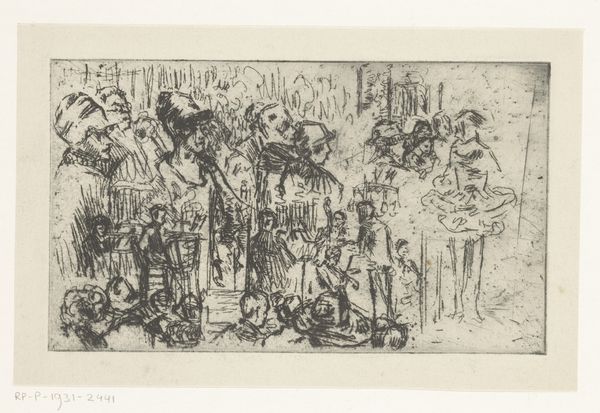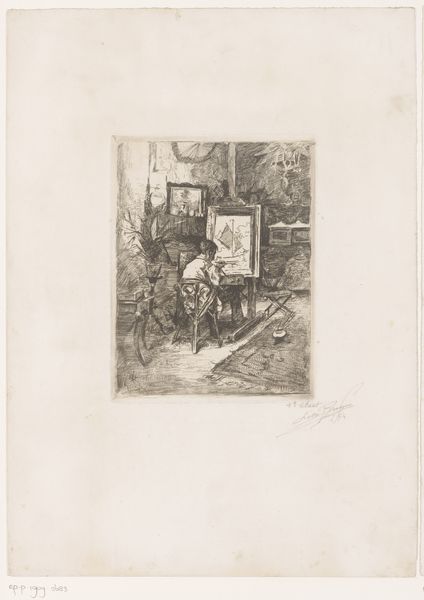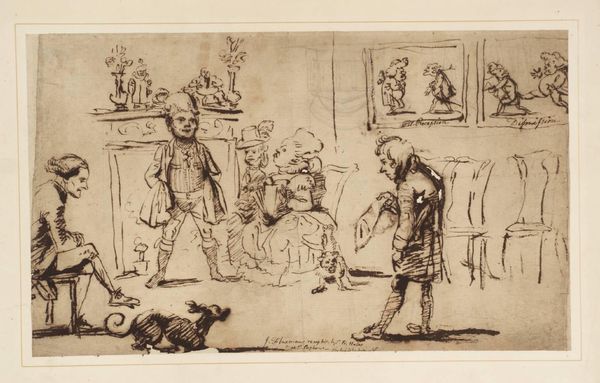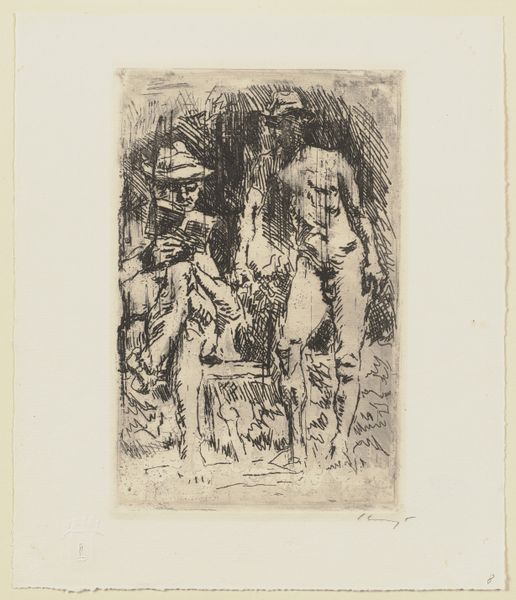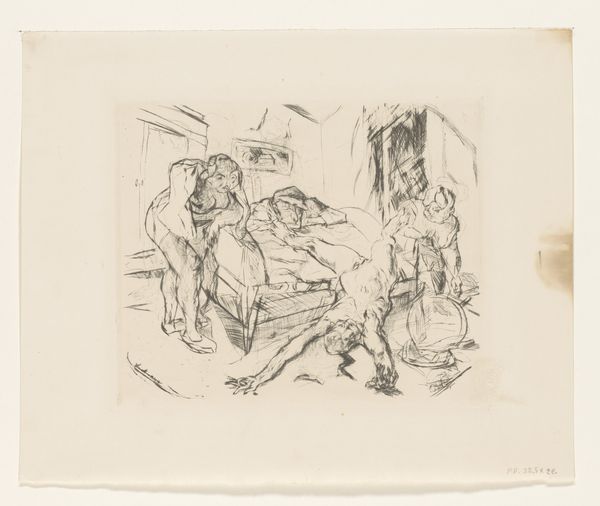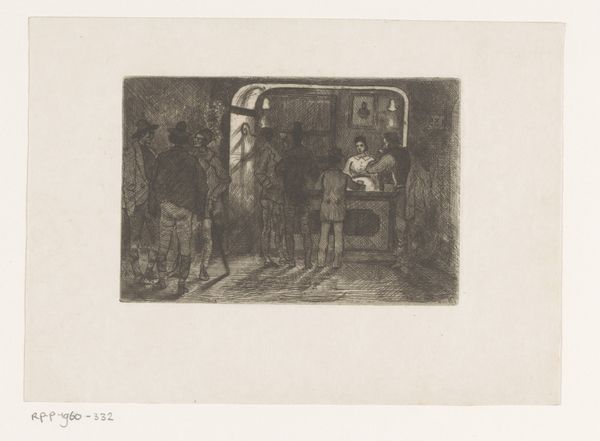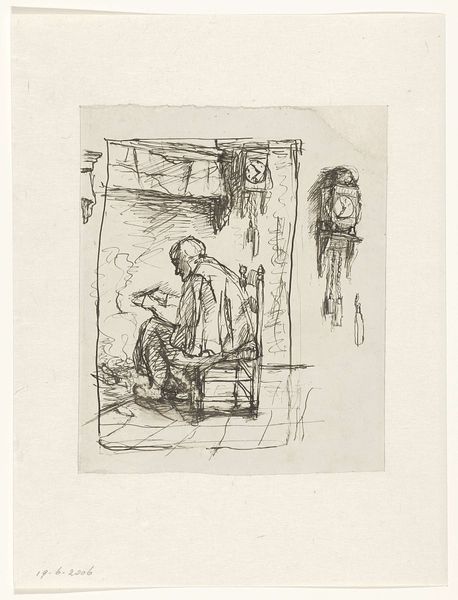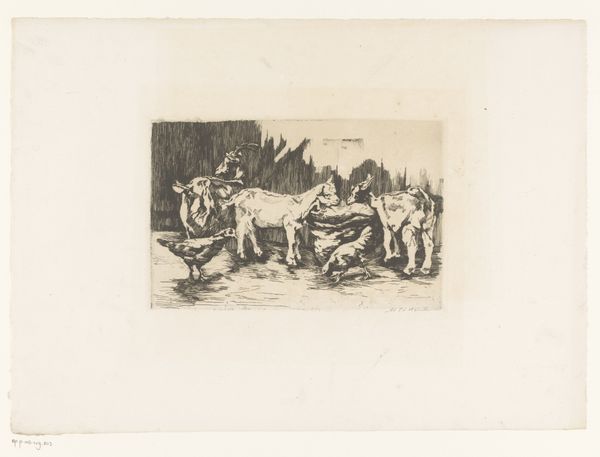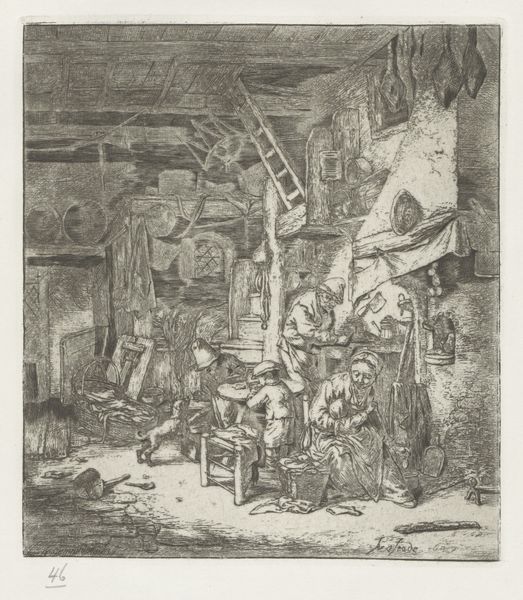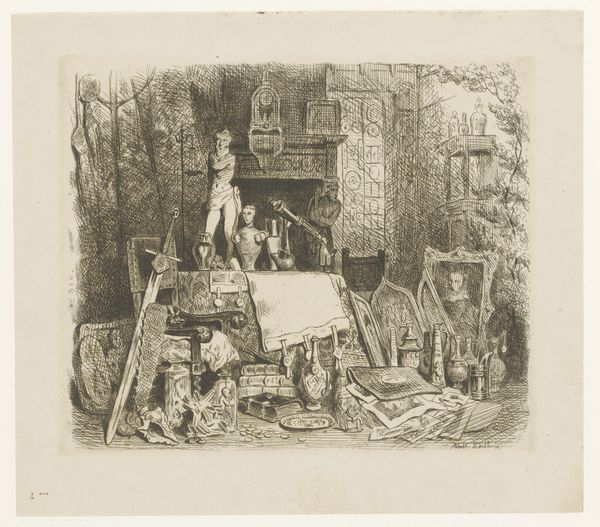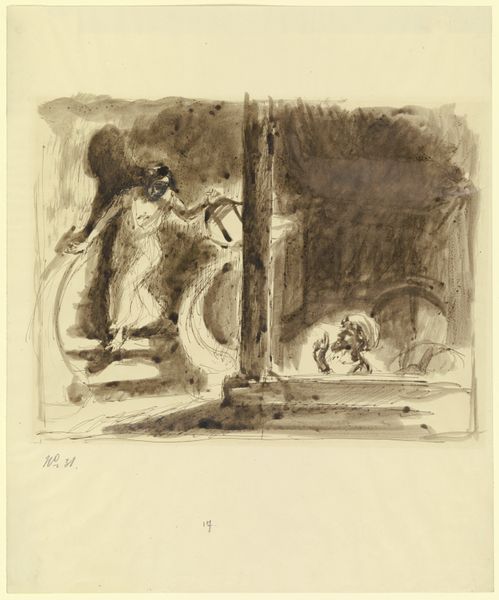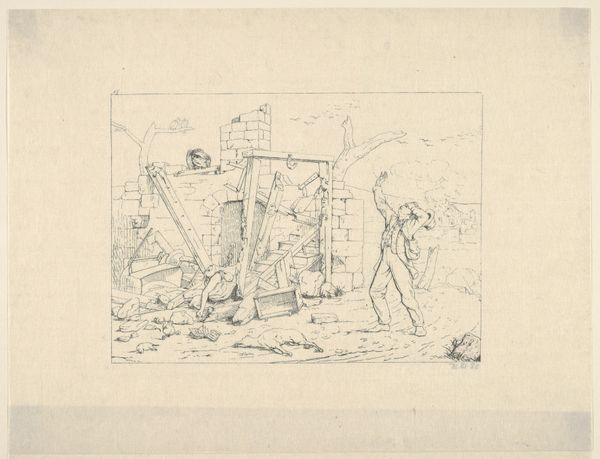
drawing, lithograph, print, etching, ink
#
portrait
#
drawing
#
lithograph
# print
#
pen illustration
#
pen sketch
#
etching
#
figuration
#
ink line art
#
ink
#
expressionism
#
cityscape
#
genre-painting
Dimensions: height 174 mm, width 229 mm
Copyright: Rijks Museum: Open Domain
Curator: Gosh, look at this—it’s buzzing with life! Such nervous energy. Is it just me, or do you immediately hear the hawker’s shouts, the children's laughter, the shuffle of feet on cobblestone? Editor: Indeed, there's a palpable sense of movement and urgency here. We are looking at "Man toont prenten op een markt," or "Man Showing Prints at a Market," created in 1918 by Max Slevogt. It's a lithograph—essentially a print made from a stone or metal plate—which allows for these lovely, dark, scratchy lines. Curator: It's Expressionist, wouldn't you say? I mean, there’s almost a feverish quality to those lines. Like he had to capture this fleeting moment before it vanished. Is it a marketplace, or a theater stage? The figure wielding the pointer looks more like a ringmaster. Editor: That's astute. The marketplace has historically been a public arena, a space for not only commerce but also social commentary. Consider the time this was made. 1918. The end of the Great War. Social and political upheavals would absolutely filter into artistic representations of even everyday scenes like this one. Curator: Right, a printmaker becoming this vital mediator, pushing imagery, trying to maybe shake people awake—offering an emotional truth? I feel there is a sadness to the group huddled on the right, which the lively pitchman almost doesn't reach, don’t you think? And yet there is the couple, standing formally like in a photograph. Editor: Yes, and notice how Slevogt uses the architecture and that printed display as a kind of proscenium? He's framing a performance within the larger performance of the market. In Expressionist style, this print is less concerned with straightforward, reportage of what something *looked* like than communicating something about collective consciousness. It highlights the anxieties, aspirations, and collective life. Curator: So, beyond the initial impression of frenetic activity, it's really a picture about connection. Who we are as a people and as consumers, what stories bind us together, what’s valuable to share and show to others. Thank you; it's really made me see this market crier with new eyes! Editor: Thank you for sharing your emotional point of view, art can do many things, it reminds us about human nature with all the good and all the bad things about us.
Comments
No comments
Be the first to comment and join the conversation on the ultimate creative platform.
